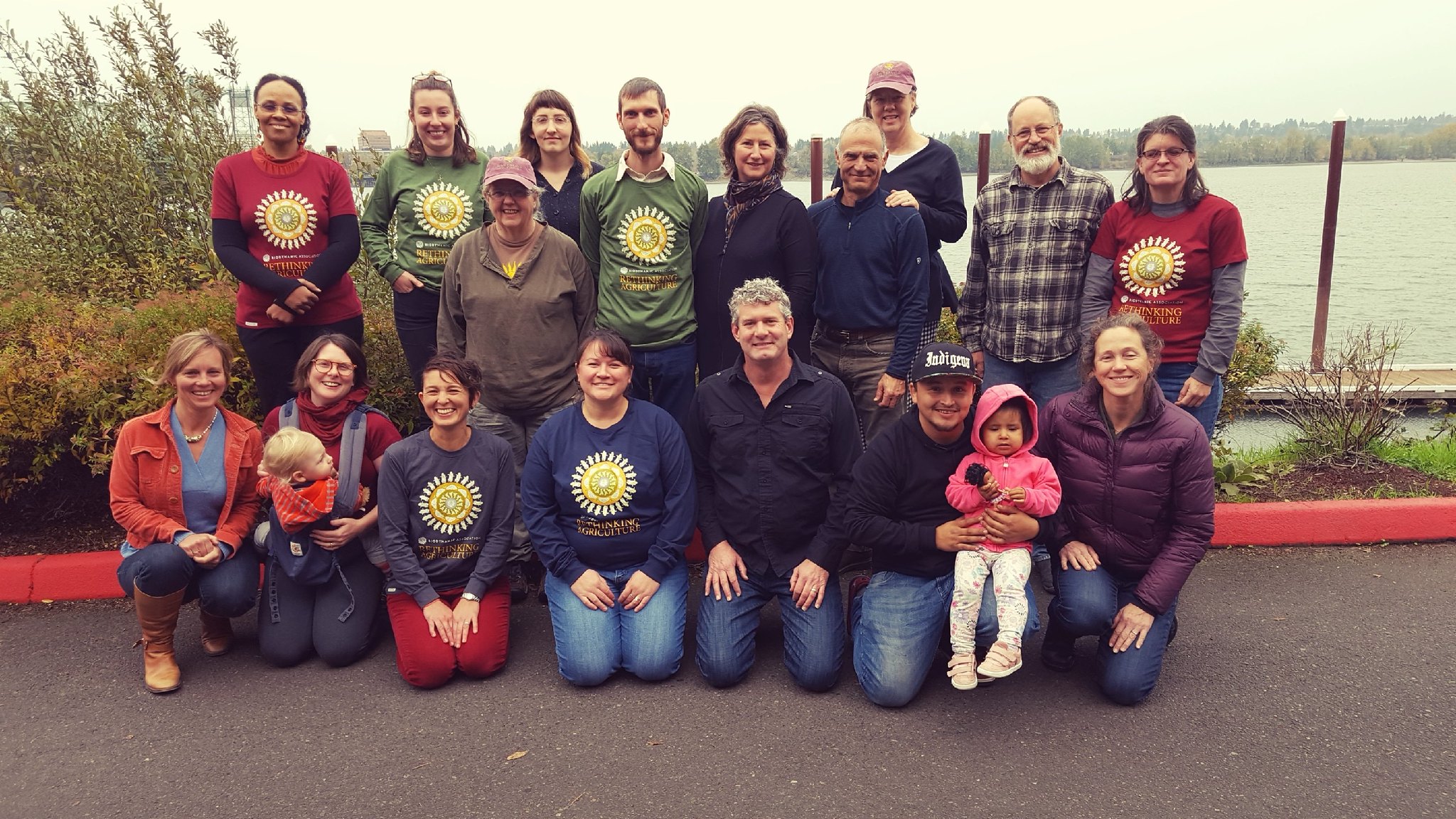
BDA staff and board before the 2018 Biodynamic Conference
By Anna McAvoy-Emrick, with Rebecca Briggs and Thea Maria Carlson
The staff of the Biodynamic Association has been busy jumping into the planning for the 2019 North American Biodynamic Conference, Cultivating Relationships: Earth, Cosmos, Community, taking place at Lake George, NY this coming November 20-24, and we want to share a bit with you about how this conference comes together.
The planning of a North American Biodynamic Conference actually starts 2-3 years out when we first determine the region in which we'll want to hold the next conference. This decision is based on where we feel there is a strong biodynamic impulse and/or a good potential for new biodynamic activity, as well as considering a region we haven't been to recently. We then research and visit venues in that area that meet a long list of criteria gathered from many years of conference evaluations, including venues that incorporate natural light, have some elements of nature in their surroundings, can fit 800+ people for general sessions and multiple simultaneous breakout sessions, and are close to exemplary farms that we can visit for pre-conference field days. Finding a venue that meets all these criteria can take a lot of diligent digging and many conversations. One of the deal-breakers for our group is a venue that will allow us to bring in as much Biodynamic, organic, and locally-sourced food as possible in order to provide high-quality, nutritious, delicious meals and snacks. It’s so important that we all actually get to eat the food we grow, talk about, and learn about all the time — food that supports us all nutritionally and spiritually as we come together at the conference!

Hawthorne Valley Farm, one of the field day sites for the 2019 conference

(Broken Banjo Photography)
An advisory committee for a conference is formed about a year out from the conference and includes people from diverse backgrounds and perspectives, including farmers, gardeners, educators, and movement leaders; people who have been involved in biodynamics for decades and some who are relatively new; as much diversity in race, gender, and age as we can assemble; and a combination of people who live in the region where the conference will be held and people who live in other parts of the continent. The committee helps us imagine and create a conference that attracts a multitude of people and serves the needs of a diverse group of participants.
Some of the first tasks of the advisory committee are to brainstorm conference theme, keynote, and workshop ideas. These tasks usually start in December or January, building on lessons learned from the conference we have just finished and considering ideas that were generated in previous years but didn't yet make it into a conference’s content. Once the first batch of ideas are gathered, advisory committee members, as well as members of the BDA staff and board, continue an intensive process of clarifying, discussing, and generating new ideas while we open up the workshop submission form on our website to gather proposals from the broader community. The advisory committee’s role in this process is to help us select an appropriate breadth and depth of conference sessions to best serve the needs of community members who will participate — people coming with an array of experience levels, ways of working with biodynamics, US and worldwide regions, and interest areas. In 2019, an incredible 160 workshop proposals were submitted, which we had to narrow down to just 60 workshop slots! We’re indebted to the time and thoughtfulness contributed by so many individuals each year, as they truly help to build the core of the conference content and experience.
During this same time period, some of our staff are also hard at work partnering with sponsors, exhibitors, food donors, advertisers, and scholarship fund funders. These partnerships truly help make the conference possible; provide conference participants with a wide variety of foods, products, and services; and, maybe most importantly, help biodynamics realize its full potential in the world through their strong commitment. Their generous support helps us to take biodynamics to the next level by providing a national educational platform and voice for the evolutionary solutions it provides to the challenges facing our world today.

(Broken Banjo Photography)
In late spring, we are also focused on pulling together all the information to help communicate what you can experience at the conference: information about speakers and events, logistics for various ways of getting to the venue, discounts and other information on lodging, forums for ride and room sharing, photos and information about the region, children’s programming, and much more. At the same time, our registration and technology staff are working to set up an easy-to-navigate online registration system and starting to connect with potential attendees by phone and email to help answer any questions and guide them through the process.
Each year, we’re humbled and inspired by the incredible commitment of the biodynamic community, which is key to pulling off an event of this scope and magnitude: the time and wisdom of the advisory committee, the ideas and creative energy of those who submit workshop proposals, the insights and connections of local farms and groups, the amazingly high-quality foods and beverages grown or provided by a wide array of biodynamic and local farmers and businesses, the commitment and generosity of our partners, and the passion and unique perspectives that each attendee brings to this particular place and moment in time. It is indeed through the relationships we all cultivate together that such an event can occur. We hope you will join us in Lake George this November to experience the culmination of so much energy and creativity!
Look for part two of this series later this summer.

Comments
s.hoskin@xtra.co.nz said:
Thanks for sharing these insights and to all those who make these events happen. Hope to get to one of them someday. Keep up the great work.
Su.
Add new comment